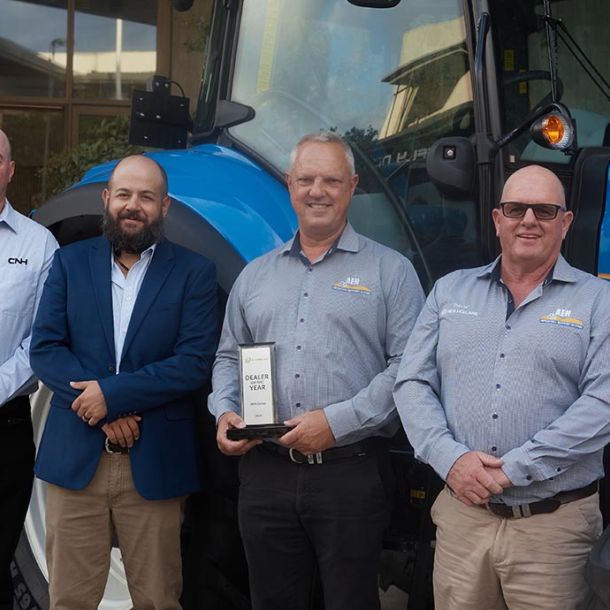Tillage a top alternative to control herbicide-resistant weeds
The proliferation of in-crop weeds, such as rye grass, especially in the southern cropping regions of WA, NSW, SA and Victoria, and post-harvest weeds prevalent during summer and autumn including fleabane, Rhodes grass, melons and wireweed, has been exacerbated by the ever-increasing cost of herbicide chemicals, as well as the tendency for some weeds to develop resistance to common herbicides such as glyphosate.
The Integrated Weed Management Manual [1] published in 2019 by the Grains Research & Development Corporation (GRDC) estimated the annual cost of weed management to the agricultural industry at $3.3 billion, with individual farmers bearing costs of up to $113 per hectare in weed control measures, and an additional $33/ha in reduction to crop yields.
In the GRDC 2016 study, Impact of Weeds on Australian Grain Production[2], herbicide resistance was observed to affect 43% of cropping land on average, while 64% of growers identified some herbicide resistance on their farm.
If not effectively controlled, weeds can deprive the soil of essential moisture, nitrogen and minerals, impacting overall soil condition, and can cause blockages in seeding equipment and make it harder for tined implements to provide accurate seed placement or depth.
To counter herbicide resistance, other control tactics may include stubble burning, rotational cropping, biological control, grazing, or tillage options such as the K-Line Ag Speedtiller® range.
These measures can be deployed in place of chemical use, or as part of an integrated attack strategy.
Dr Jason Emms, GRDC Manager – Weeds, noted: “There is no simple solution to weed control in this complicated environment. Instead we need an approach that combines integrated tactics, such as mechanical, chemical and cultural farm-management techniques.”
Experts also recommend that effective weed control can only be achieved by correct identification of weed variants and growth patterns, to ensure deployment of the most effective countermeasures at the optimal time.
Herbicides – the good, the bad, the resistant
Herbicide spraying remains the primary weed control tool for the greatest number of applications, but the efficacy of chemicals continues to erode due to herbicide resistance, which the WA Department of Primary Industries and Regional Development defines as “the inherited ability of an individual plant to survive a herbicide application that would kill a normal population of the same species”[3].
Annual ryegrass is “the most important and costly weed to Australian winter crops with an estimated yield loss of $34.1 million to the Southern region”, says Croplife Australia[4], due to the grass’s high level of seed production, plus the frequency of herbicide use in its control.
Another significant weed often observed during the summer and autumn post-harvest period is fleabane, “a woody weed that presents a major problem to broadacre and horticulture growers, particularly in fallow situations and where there is limited cultivation”. It is known to be difficult to control with herbicides, “due to a natural tolerance to glyphosate”.
Other factors that may reduce the overall impact of herbicides, especially in post-harvest applications:
- Weeds grow well in post-harvest stubble, making spraying difficult to apply on the leaves, while the dry stubble absorbs the chemical before it can reach the foliage;
- Summer and autumn may be dusty, reducing the chemical impact of spraying;
- Unpredictable summer rainfall events can make it difficult to apply herbicide at the right time. Weeds can become too mature and the leaves dry, making it hard for the chemical to be absorbed;
- Some weed varieties are hardy and thrive in hot conditions, with tap roots (fleabane) or well-established lateral root systems (melons and wireweed).
An ideal solution is to deploy a mix of spraying and tillage to control the largest number of potential scenarios.
The case for tilling
Tillage can be an extremely effective one-off tactic to combat weed growth, particularly in the case of post-harvest weeds and other herbicide-resistant populations. It can also form a non-herbicide component of a ‘double knock’ strategy alongside chemical spraying or other intervening measures.
GRDC’s The Integrated Weed Management Manual[1] says “well-timed cultivation effectively kills weeds” via a number of processes, including plant burial; seed burial, thus reducing the ability to germinate; root severing; plant desiccation, where plants are left on the soil surface to die; breaking seed dormancy; and placing seed in a more favourable environment, to encourage germination for subsequent control.
It notes: “Although environmental factors such as damage to soil structure and increased erosion risk must be considered when choosing to use multiple cultivations to control weeds in herbicide-resistant paddocks, it may be the most environmentally sound option available.”
Deep and effective cultivation using the K-Line Ag Speedtiller® range may serve as a highly effective measure to combat summer or autumn weeds.
The Speedtiller® is a heavy-duty machine designed in Australia for Australian conditions, providing fast and efficient tillage with superior penetration. Its front row of discs can be adjusted laterally for total soil disturbance, disc wear compensation, and for maximum weed control.
It’s an exceptional tool to assist in strategically managing summer and autumn weed issues, while leaving behind an excellent seed bed for seeding into.








